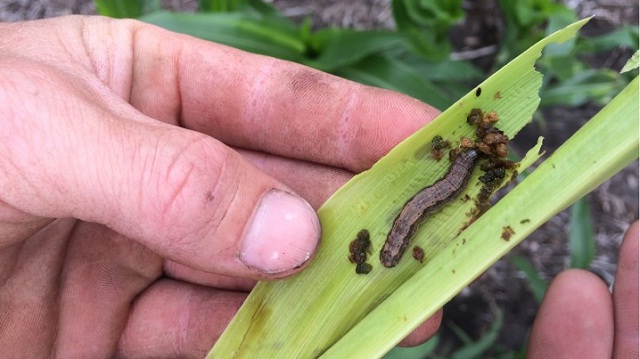
Kisumu, Kenya | AFP | On farms across Africa, a seemingly innocuous brown and beige caterpillar is waging a silent war, devastating rural incomes and posing a major threat to the continent’s food supply.
In just two years, the so-called fall armyworm has colonised three-quarters of Africa, according to the British-based Centre for Agriculture and Biosciences International (CABI).
Its favourite food is maize, also known as corn, the staple on which over 200 million smallholder farming families depend for their livelihoods.
The fall armyworm is believed to have made its bridgehead in West Africa after being accidentally brought in from South America, its native home, by sea or air cargo.
It was first detected in Africa in 2016.
“Since then, it has very rapidly spread across the entire continent. It’s reportedly now causing damage in more than 40 countries,” said Boddupalli Prasanna, an expert at the International Maize and Wheat Improvement Centre (CIMMYT) in Mexico.
The larval, or caterpillar, armyworm is perfectly adapted for destruction.
Growing up to about 50 millimetres (two inches), it nestles in the leaves around the head of maize.
The critter then attacks methodically, leaving behind shredded leaves and chewed or hollowed ears of corn.
In one Kenyan county visited by experts last year, 30 percent of the crop was lost.
The impact on farmers and on households can be huge.
Wycliffe Ngoda, a 64-year-old farmer from near Kisumu, in western Kenya, said he lost nearly a quarter of his income last year in an armyworm outbreak, and the price of a two-kilo (4.4-pound) bag of maize doubled in his area.
“The attack was very fast and furious. In a short while, huge swathes of (crops) had been eaten,” he said.
“I lost 50 percent of my crop, others up to 70 percent,” he said. “This is how we were introduced to armyworm: very rudely.”
 The Independent Uganda: You get the Truth we Pay the Price
The Independent Uganda: You get the Truth we Pay the Price


